 As an admitted gear geek, I love innovation and respect those who attempt to create it. Tosch Roy at Free Range Equipment is one such individual. A few years ago, Tosch and his small crew of like-minded fun hogs decided they would take on the seemingly tapped-out market of climbing packs and try to do it better. A climber and skier himself, Tosch saw plenty of room for improvement in the industry’s current offerings and knew he could lend his creative instincts to the task of making something better. The result is a line of light, durable, no-non-sense packs designed for climbers and ski alpinists.
As an admitted gear geek, I love innovation and respect those who attempt to create it. Tosch Roy at Free Range Equipment is one such individual. A few years ago, Tosch and his small crew of like-minded fun hogs decided they would take on the seemingly tapped-out market of climbing packs and try to do it better. A climber and skier himself, Tosch saw plenty of room for improvement in the industry’s current offerings and knew he could lend his creative instincts to the task of making something better. The result is a line of light, durable, no-non-sense packs designed for climbers and ski alpinists.
As a die-hard ski alpinist myself, I’ve generally been dissatisfied with my choices when it comes to packs up to the task of holding what I need, carrying skis and ice tools effectively and being durable enough to stay in one piece. I want all that in a package that is light enough to set itself apart from the hoard. I could be accused of having a kind of pack ADD, quickly discarding those which fail to live up to the hype and expectation and moving on to the next suitor in line. Ballistics cloth, multiple compartments, useless features and poor ski carry options sent many models to Craig’s List. Even packs that I liked ultimately had things about them I’d change if I could, and indeed, I did if the sewing mods were simple enough for my limited skills.
The industry is not blind to this idea of getting it right. Indeed, for years, companies like Black Diamond and Marmot had the corner on the durability end of the equation but, until recently (BD Cirque), it has come at the expense of increased weight. To my eye, the weight issue was driven by fabric selection, complicated suspension systems and the addition of superfluous compartments and zippers. It seems that market forces favor concepts that the casual consumer will find attractive like the durability issue and sexy features such as separate compartments for avalanche gear. I get that. You have to sell stuff to stay in business. But those things don’t get me closer to my objectives. Interestingly, as the “extreme sport” side of the market has noticeably grown in recent years, so has the attention toward more specialized gear.
On the other end of the spectrum, CAMP owns the lightweight side of the market but their bags are notorious for basically disintegrating at critical moments. Spotty construction and dubious fabric choice are typically to blame. The design is all Italian but they’re likely sewn in Third World sweatshops. In spite of this, I was a fan at their often successful attempts at making packs specifically for those of us that simply wanted to ski farther and faster and eliminate steps in the journey. Admittedly, some of the features found on CAMP packs are so clever I can’t figure them out. They even stamp little instructions on features for knuckle heads like me who would otherwise fail to recognize their purpose. Some concepts like the Backdoor would’ve been best left on the design table (my avalanche shovel blocks the “door”). But at least they keep trying. BTW, the CAMP X3 Backdoor pack weighs in at 704 grams.
Enter Free Range Equipment. Here’s a company full of youthful enthusiasm with products created by climbers and skiers who understand the demands of these activities and the desires of their peers. Conceptualized, designed, sewn and tested in Bend, Oregon, there’s no doubt who is doing what at Free Range. American skimo racer and all around mountain athlete, Eric Carter, pointed me to Free Range when I asked him about ski packs. I then contacted Tosch about getting my hands on a Raven, the alpine climbing/ski alpinism model. Turns out Tosch had read my blog for years and in the spirit of full disclosure, gave me a discount on my purchase. But the real advantage for me was my access to the guy who makes it happen. Tosch and I have exchanged several emails dealing with design ideas which is a unique opportunity for me in today’s outdoor industry.
The Raven
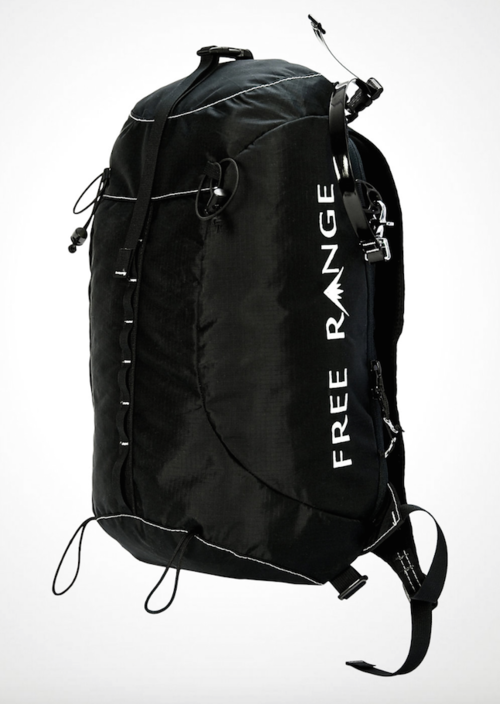 The first thing I noticed about the Raven taking it out of the box was its weight, or lack there of (576 grams with a mod). This thing is light. It accomplishes this vital task by using modern material that is both strong and light. This material is not unique to Free Range but they make good use of it. The next thing I noticed was the clean stitching and a variety of sewing details that suggested strong seams that would not blow apart. The lack of multiple complicated compartments makes inspection of this aspect of the pack simple and reassuring. And the design, while elegant, is simple. A single main compartment with a small lid-like compartment up top.
The first thing I noticed about the Raven taking it out of the box was its weight, or lack there of (576 grams with a mod). This thing is light. It accomplishes this vital task by using modern material that is both strong and light. This material is not unique to Free Range but they make good use of it. The next thing I noticed was the clean stitching and a variety of sewing details that suggested strong seams that would not blow apart. The lack of multiple complicated compartments makes inspection of this aspect of the pack simple and reassuring. And the design, while elegant, is simple. A single main compartment with a small lid-like compartment up top. I say “lid-like” because there is no true lid. Instead, the Raven uses a zipper around the perimeter of the back panel to allow access. There is an additional zippered pocket at the top inside of the main compartment, ideal for small items like keys, sunscreen or whatever.
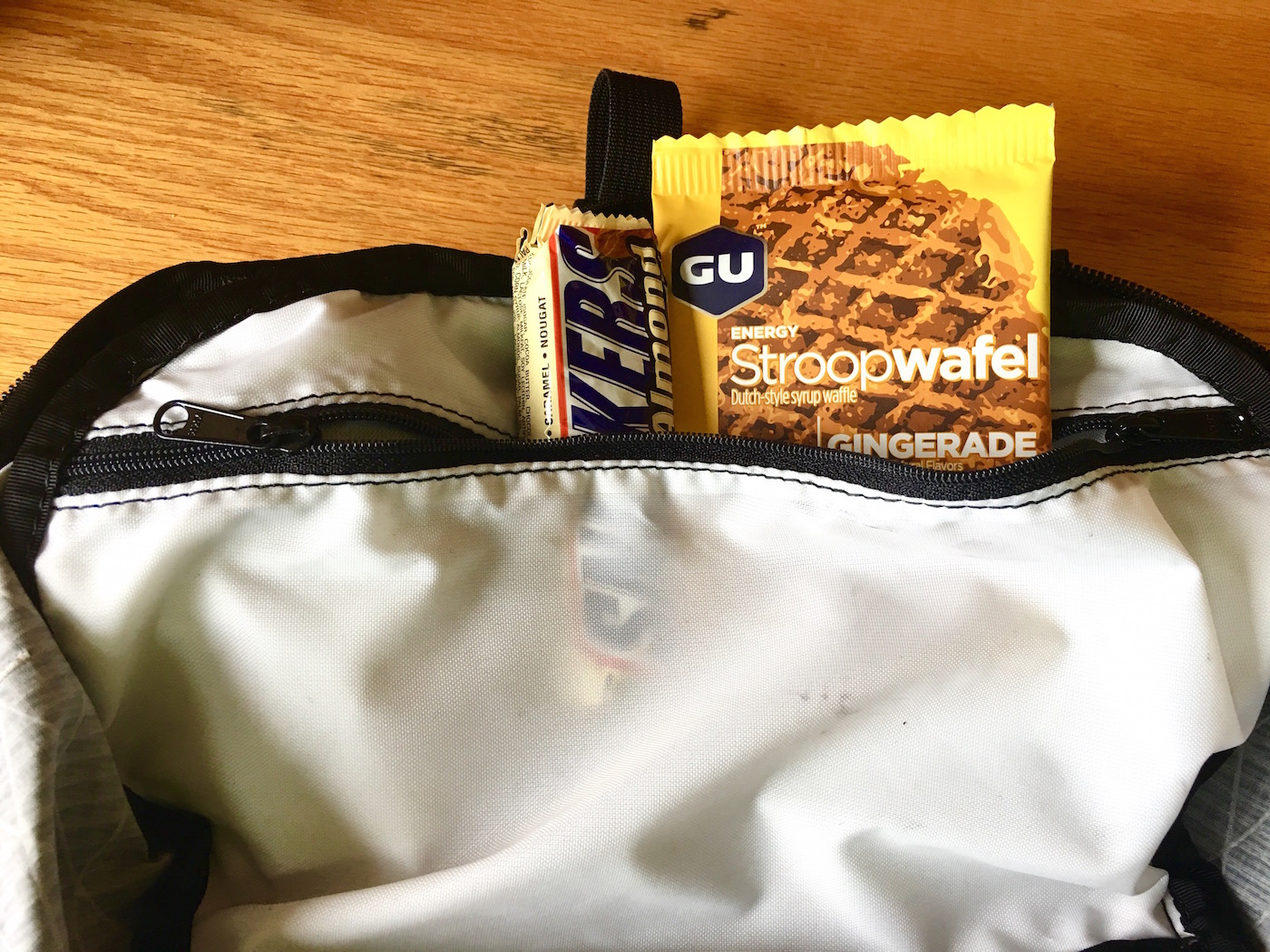 In the age of social media, I’ve become a fan of bright colors. The Raven is black. But in a subtle stroke of genius, Tosch has used white fabric for the interior of the sack so finding items in the dark is easier.
In the age of social media, I’ve become a fan of bright colors. The Raven is black. But in a subtle stroke of genius, Tosch has used white fabric for the interior of the sack so finding items in the dark is easier.
Overall size of the Raven (25 liters) is adequate but I wouldn’t mind a few more liters. On the other hand, I think Chouinard once said that, “…no matter how big your pack is, you will fill it”. So maybe Tosch shouldn’t get too carried away. For a recent mission on Mt. Rainier I was able to get what I needed into the pack, including 2 liters of water, a few layers, food, repair kit, compact crampons and ski crampons. The Raven has a sweet rope attachment at the top that keeps the cord handy without being in the way. I love that. But a few more liters would make the sack more appropriate for mid-winter outings in Alaska where layers are bulkier. For now, it’s more of a spring mission choice.
I wasn’t initially enamored with the zippered back panel. I worry about zipper failure. That said, lately, several packs have utilized this concept with few problems so maybe I’ll just settle down on this one. In my habit of “making it better,” I sewed a stop on the zipper two-thirds down each side of the pack to prevent complete gear expulsion when fully unzipped.
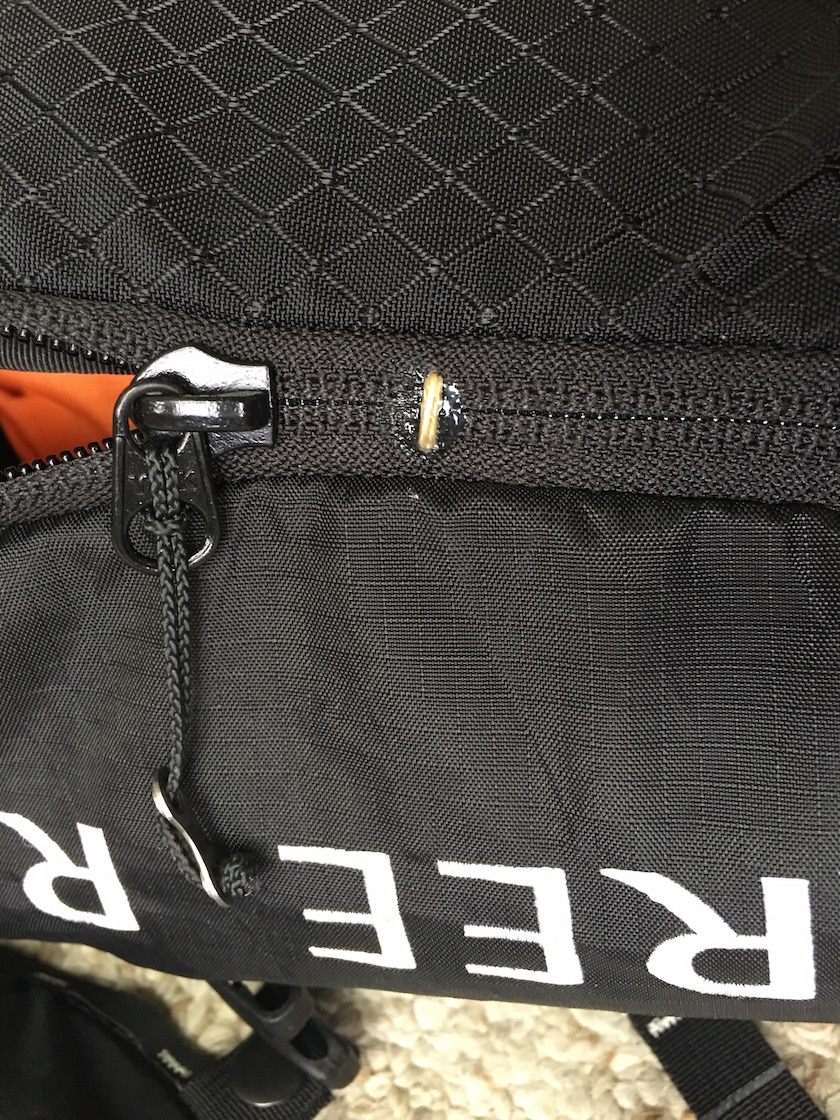 Gear remains contained while access to the contents is still more than adequate. On a recent one day ascent of Mt. Rainier’s Liberty Ridge and ski descent of the Emmons Glacier I came to understand the utility of the back panel zipper.
Gear remains contained while access to the contents is still more than adequate. On a recent one day ascent of Mt. Rainier’s Liberty Ridge and ski descent of the Emmons Glacier I came to understand the utility of the back panel zipper.
 Enjoying the rewards on the Emmons Glacier, Mt. RainierLiberty Ridge involves about 5,000 feet of steep, sustained booting followed by a few feet of steep ice climbing requiring two ice tools. This means that any pack is going to need a solid, comfortable ski carry system and a place for ice tools. More on these two aspects later. Access to a traditional top loading pack gets compromised with skis and tools in place. It becomes tedious to get stuff. With the back panel zipper, the pack is laid on its back, the panel unzipped and you have access to everything inside while leaving skis and tools in place. Very elegant. Additionally, the surprisingly roomy “lid” pocket zipper is placed away from those items so access here is easy, as well.
Enjoying the rewards on the Emmons Glacier, Mt. RainierLiberty Ridge involves about 5,000 feet of steep, sustained booting followed by a few feet of steep ice climbing requiring two ice tools. This means that any pack is going to need a solid, comfortable ski carry system and a place for ice tools. More on these two aspects later. Access to a traditional top loading pack gets compromised with skis and tools in place. It becomes tedious to get stuff. With the back panel zipper, the pack is laid on its back, the panel unzipped and you have access to everything inside while leaving skis and tools in place. Very elegant. Additionally, the surprisingly roomy “lid” pocket zipper is placed away from those items so access here is easy, as well.
Shoulder straps are equally clever, being cut in an ergonomic fashion that makes them both comfortable and more useful for the size of the strap pockets on them. One is made from stretchy mesh that’ll hold a 500cc water bottle or bear spray and the other is a zippered type that can secure gels, keys, whatever. For the bottle side, I added a piece of bungee to loop over the neck the bottle so it stays put.

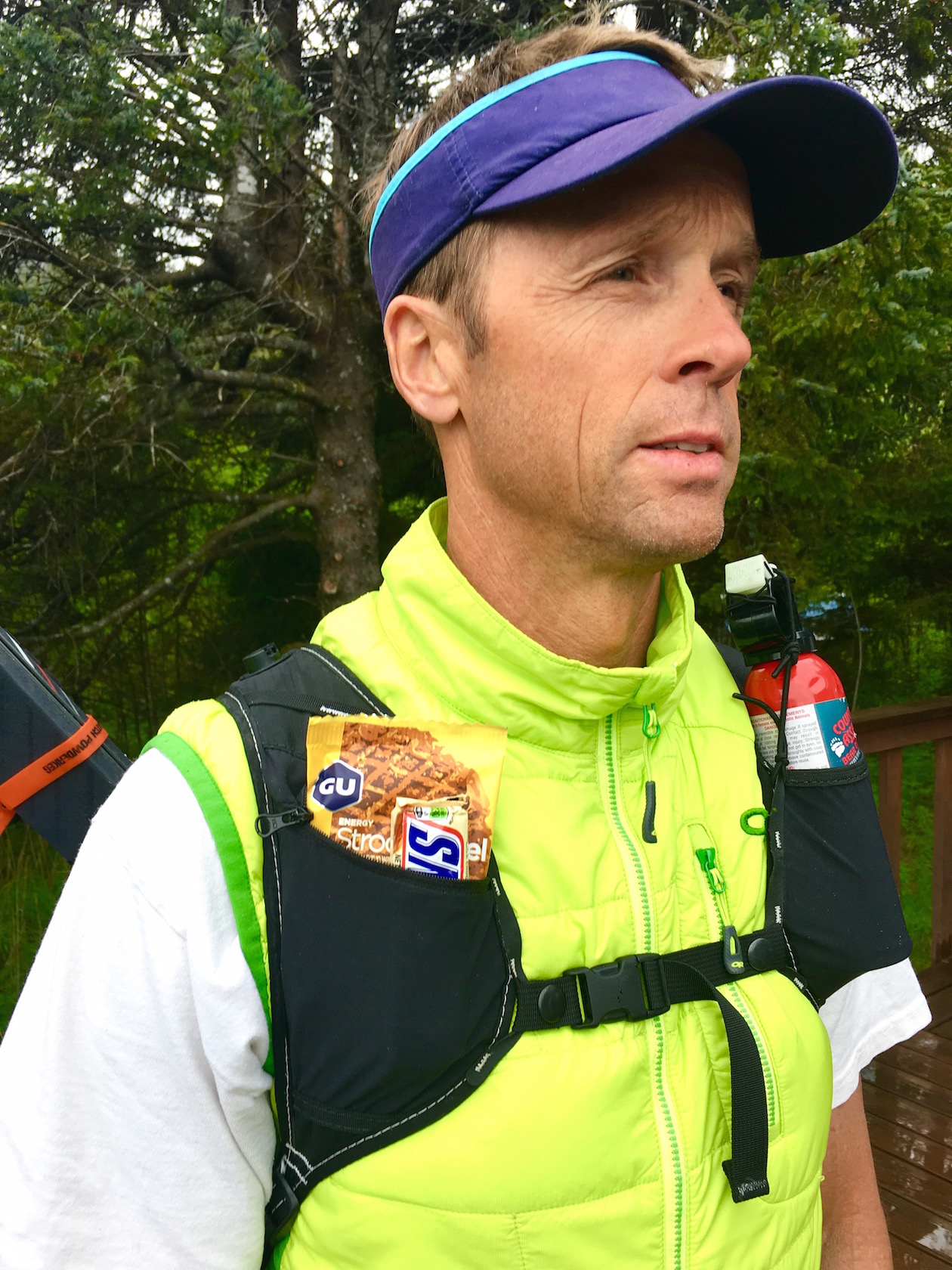
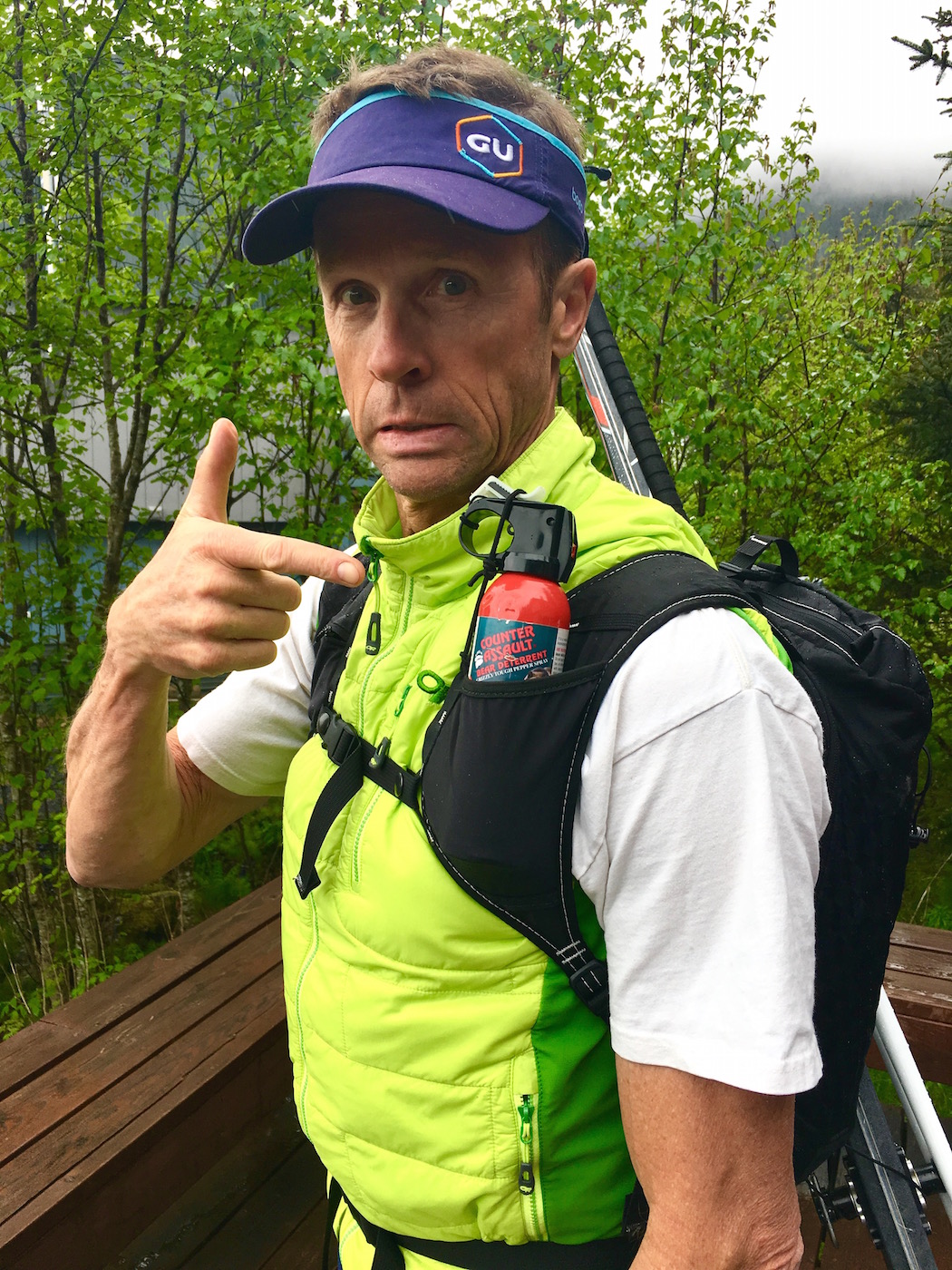 The realities of spring skiing in AK
The realities of spring skiing in AK
For carrying skis, there are two options. One being a diagonal-style with a burly coated steel cable loop and vinyl coated strap the secures the top end. Super simple and bomber. 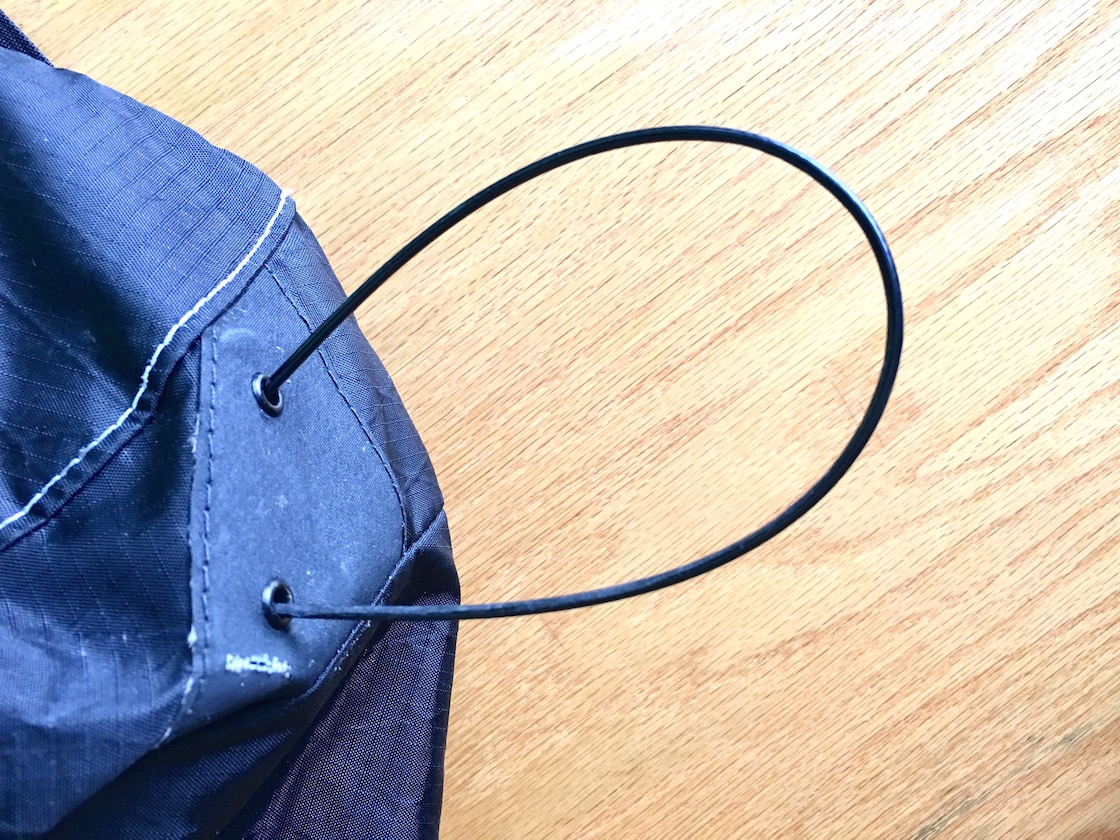 Just to bump up the freakin’ bitchin’ factor, the cable loop is adjustable with a screw driver on a clasp hidden in the pack.
Just to bump up the freakin’ bitchin’ factor, the cable loop is adjustable with a screw driver on a clasp hidden in the pack. 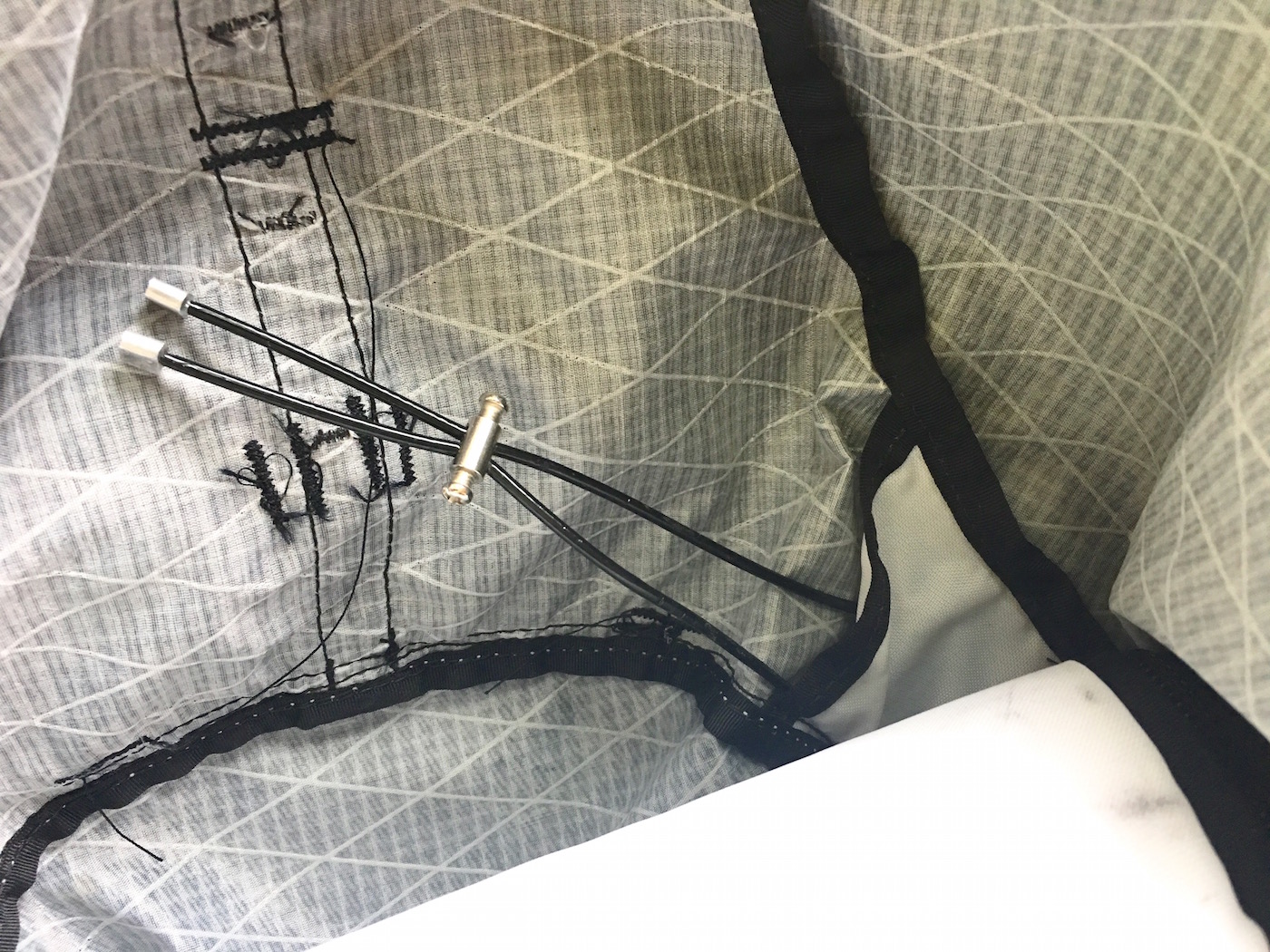
 The other carry system is designed as a quick attachment system for skimo race-style maneuvers that uses a magnetized peg-in-slot affair that seems overly clever. The slot didn’t quite line up correctly and wouldn’t hold my skis predictably so I abandoned it all together. This feature needs some work. I suspect a simple hook would suffice. As long as I’m splitting hairs here, the clasp for the diagonal carry is 26.6 grams by itself. That’s heavy for such a feature. Tosch admitted that sourcing the ideal widget for this purpose has been tricky.
The other carry system is designed as a quick attachment system for skimo race-style maneuvers that uses a magnetized peg-in-slot affair that seems overly clever. The slot didn’t quite line up correctly and wouldn’t hold my skis predictably so I abandoned it all together. This feature needs some work. I suspect a simple hook would suffice. As long as I’m splitting hairs here, the clasp for the diagonal carry is 26.6 grams by itself. That’s heavy for such a feature. Tosch admitted that sourcing the ideal widget for this purpose has been tricky.
For tools there are two simple parachute cord loops and some bungee cord with cord locks up top to hold the shafts. I’m not a fan of this style of attachment as many modern tools with low profile heads don’t hold well in this traditional set up. Adequate but not idealAlso, once the cord breaks, you’re screwed as they’re sewn into the seam of the pack. Instead, I favor a common sleeve through which to slide the picks and then secure them with a strap and buckle or two. This is becoming the norm in climbing packs for obvious reasons. So, I took my Raven to my friends at Revelate Designs, a bike pack design and manufacturing company here in Anchorage. Eric Parsons is a split boarder/mountaineer, as well, and easily understood what I wanted. He fashioned what I was looking for and sewed it for me in a much more bomb proof fashion than I could have with my little Singer.
Much better, IMOProblem solved. I suggested to Tosch that he consider this on his next iteration of the Raven. Not sure if he’ll take my bait but it was an easy add on if not.
There’s a sleeve for a bladder if you roll that way but I tend not to when temps are chilly due to freezing issues. However, the sleeve makes a nice little spot for a shovel blade or it can double as a spot for a soft water bottle like a Platypus to keep it from pokey things in the main bag.
Final Thoughts
On the whole, the Raven is a great pack that does what Tosch Roy envisioned a good ski alpinism pack should do. In a perfect world I’d tweak it a tic or two but I suspect other overly-opinionated climbers like me might leave it or mod it in other ways. But discontent is the mother of invention (quote mod, right there) and the Raven was born of such emotions. Good for all of us.